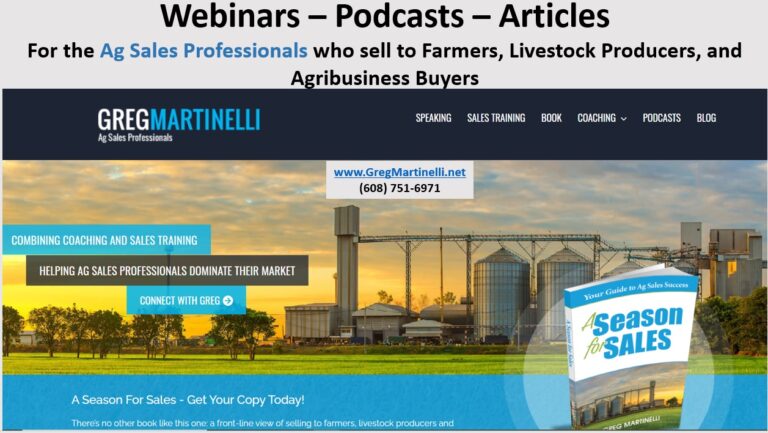It’s more important to your selling success than you think
What are the 4 Components of an Iconic Selling Experience (SX)?
During sales training workshops, one of the first points I convey is how important you are in creating the Selling Experience (SX) for your customers. Lately, we hear a lot about CX (Customer Experience) and how it encompasses everything and everyone that interacts with the customer. This is great and we need to be aware of all those aspects. However, there are some components of the customer experience you are simply unable to control. For example, a customer service rep is out for the day and the phones are backed up…. a delivery truck breaks down and your shipments are late….your company changes the accounts receivables guidelines and ten of your customers are cut off from ordering due to the new credit policy, etc. You don’t have 100% control of those experiences.
However, you do have 100% control of the Selling Experience (SX). To illustrate my point, I ask the attendees in my workshop, “What’s it like to be your customer?” Typically, they start responding with their company driven experiences, like ordering, using the products, etc. “No, no,” I exclaim. “What is it like to be YOUR customer? You specifically?” They may still be puzzled. So, I further clarify, “Does the customer who buys from your brand-new salesperson have the same customer experience as someone who buys from your most experienced salesperson?” The answer is always, “of course not!” Then I ask again, “Well! What is it like to be your customer? What is the Selling Experience (SX) like with you?”
Too often, we overlook the importance of what we do for our customers. Moreover, we take our own selves for granted as to how much we do for them. Mistakenly, we minimize the importance of the Selling Experience (SX) that our customers receive by doing business with us. Here’s a helpful internal mantra you can tell yourself when calling on prospects, “This prospect really wants to do business with me, but just doesn’t know it yet.” Having the ability to deliver a great Selling Experience (SX) to your customers will give you the confidence to think this way.
You are not someone that goes out and convinces a customer to buy products. You do not schmooze customers. And you definitely are not an order taker. While you may do all those things, they are a small part of the Selling Experience (SX) of buying from you.
I want you to take a different view of your role as a salesperson and how you bring the SX to life for your customers. I want you to think of yourself as the quarterback, the owner, the general manager, and the commanding general of the Selling Experience (SX). It’s your call to bring in more troops, reinforcements, call a time out, allocate more/less resources and make the SX different with you. Own it because it’s really who you are!
Why is this so important? It will give you the confidence to cold call prospects. It will motivate you to stick with a product, promotion or program when the going gets tough. It will help define your sales career later on. In the short run, one of the most important outcomes of a strong Selling Experience (SX) is the ability to overcome objections and competitive pressure. Because, after all, the only way to get the SX of buying from you is to buy from you.
The Selling Experience (SX) is broken down into four components:
Mechanics
Technical
Support
Follow-Up
- Mechanics: This is the mechanical process of being your customer.
Factors to consider:
- Easy vs hard to get hold of: On a recent sales mastermind I was holding, one of the attendees mentioned how he was increasing sales. His comment, “I answer my phone!” I had to expound on how revolutionary this concept is in a day and age when everyone lets it go to voicemail. Here was someone actually suggesting that it helps increase sales by actually answering the phone.
- Quickly reply to requests vs “at my earliest convenience”. Ever hear one of those phone messages that say they will get back to you at their earliest convenience? If you are like me, you think of it as a slightly arrogant way to tell someone calling that your time is more important. It doesn’t matter if you think it or not. If you are in sales, I recommend removing that phone message literally and figuratively. Get back to them as fast as you can.
- Accuracy: You know your business and can answer questions to the customer’s satisfaction accurately. In other words, you’re not just a good looking, smooth-talking order taker. You learn more than you’re taught. You learn about the economics of your own business as well as your customer’s business. This helps you in one of your most important roles: marrying those two businesses into a mutually beneficial relationship.
- You’re where you are needed when you’re needed and with what is needed. This turns you into a resource and moves you to the top of the list of people to call when your customer is struggling, has a question or is trying to make a decision.
2. Technical: This is your technical support of your products and their use by your customer.
Factors to consider:
- It goes way beyond charts, data, and graphs! Anyone can hand out a brochure, read from a flyer or refer a customer to a web site. However, your customer is looking to you for the technical expertise of getting the best solution and the most from their investment. The Selling Experience (SX) of buying from you includes the interpretation of how to use your products on their specific farm or agribusiness.
- It doesn’t have to be you, but you are the coordinator of it all: There will be times and industry technology that is beyond your skills and knowledge. While we continue to learn in our efforts to be effective salespeople, you don’t have to know it all. However, you do need to know someone who knows it all. Ideally, that someone is in your company, but doesn’t have to be. You just need to be the facilitator that connects your customer to the information source.
3. Support: This is how you personally support the customer throughout their Customer Experience (CX). For this component of the Selling Experience (SX), we want to think broader in scope. Sure, we want to support the sale of our products. We covered that area of the experience under the Mechanics mentioned above. The level of support I am talking about is being in support of your customer’s business.
While riding along with salespeople and coaching their selling techniques, I often will see a salesperson who only deals with their products or product lines. In other words, if selling seed and the subject goes to fertilizer or ag lending, the salesperson shuts down. Once the topic is back on seed, the salesperson becomes re-engaged in the discussion. It’s like they either aren’t interested or just don’t want to discuss anything outside their focused product line. While this is a safe technique, I think they miss out on a huge opportunity.
Supporting your customer’s business doesn’t just mean you post, “Thank a farmer” memes. It means you learn as much as you can about integrating your products, services, knowledge, and connections into your customer’s entire business. You use your ability to network to connect your customer with more resources than they will find on their own. When training, I’ll explain, “As an ag sales professional, you go farm to farm to farm, all day long, every day. This gives you a tremendous understanding of what is working and not working for customers.” Bring this to your customer and you will definitely produce a different Selling Experience (SX) than your competition.
4. Follow Up: Do you get back to your customers?
Avoid the – All talk and no action approach! During a sale call, either on farm or in an agribusiness, the conversation goes all over the place. It usually starts with the weather, jumps to a customer complaint, moves on to an industry trend, makes a U-turn into a local gossip story and finishes on international politics. Amongst all those topics, you have to somehow focus the discussion on what you are trying to accomplish on the sales call: selling something, gathering info, collecting on a bill, etc.
Comments are made, tidbits of information are tossed out in the conversation and questions are posed by your customer.
If you want to be regarded as the typical salesperson, ignore anything mentioned or questions asked that you don’t know the answer to. Just be – All talk and no action.
However, many of the successful salespeople I know, take good notes and gather information while calling on their customers. The very best will even read between the lines to determine a better solution to a customer’s situation. Then, they actually follow up. They go back to the customer and let them know they heard them and want to help them.
Doggedly following up is a simple act that will set you apart from almost all of your competitors. Additionally, if you speed it up and rapidly, doggedly follow up, I venture to say that you will set yourself apart from all of your competition.
Here are a few areas to focus on following-up:
- A legitimate customer complaint: This might be the highest priority of follow up needed. First, stop the bleeding (dying animals, dying crops, customer pain or delays). Then make it right. Replace the product, credit them for the damages, etc. The earlier you do this, the lower the dollar amount of claims.
- A customer complaint that is not legitimate: not as high a priority, but I want to always follow up on this to let them know, I checked into it and they weren’t accurate in blaming my products or company. The value of following up in this way is that, if you have one of those customers that likes to sling blame around when something isn’t going good for them, they now know that you will not just accept their complaint blindly. You will follow up and return with an answer. It prevents the customer from complaining in the future without verifying the truth.
- Their questions – verbalized or not: During a sales call, there are going to be questions thrown around. Take a minute and write down any that you don’t know, especially if you promise to find out and get back to them. Then actually get back to them. The really astute salesperson will make inferences from the discussion to uncover questions the customer should be asking. Then she will research the answer and get back to the customer with her newfound information.
- You got them into it. Make sure you get them through it. Ever sell a customer a new product and then never follow up to see if they were happy with it or not? Ever get a customer on a program or a new software application but never follow up to see if it worked for them, the way you promised? I know my answer is “yes” to both those questions. It wasn’t intended, but I got busy after selling the customer and failed to go back and follow up. That’s how the typical salesperson acts. Not wanting to be typical, I make it a point to follow up. After all, I got them into buying the product. I feel it’s my responsibility to get them the return on their investment as promised.
While the Selling Experience (SX) is only one component of the entire Customer Experience (CX), it is one aspect that you have control over. As you develop yourself in your selling career, don’t leave this critical element to chance. It’s too important. At times, when the rest of the customer experience is not going well, the Selling Experience (SX) of buying from you might be the only reason your customers are still buying.
For more information on Ag sales training, coaching or business development, contact Greg Martinelli at Ag Sales Professionals, LLC at (608) 751-6971. Email is Greg@GregMartinelli.net Web site is www.GregMartinelli.net




